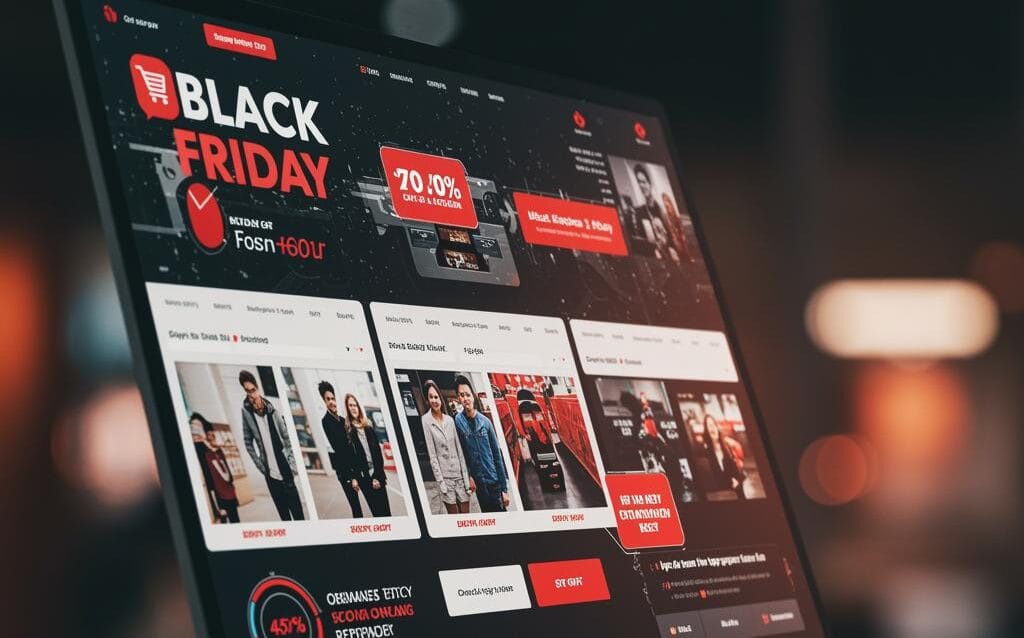E-commerce Optimization: Handle High-Traffic Events
E-commerce Performance Optimization for High-Traffic Events
High-traffic events like Black Friday, Cyber Monday, and seasonal sales can be incredibly lucrative for e-commerce businesses. However, they also present significant performance challenges. A sudden surge in visitors can overwhelm your servers, leading to slow loading times, website crashes, and ultimately, lost sales. This blog post provides a comprehensive guide to optimizing your e-commerce platform for these critical events, ensuring a smooth and profitable experience for your customers.
Preparing Your Infrastructure
Scaling Your Servers
One of the most crucial steps is ensuring your servers can handle the anticipated load. This often involves scaling your infrastructure, which can be done in a few ways:
- Vertical Scaling: Upgrading your existing servers with more processing power, memory, and storage. This is often a quicker solution but has limitations.
- Horizontal Scaling: Adding more servers to your infrastructure and distributing the load across them. This is generally more scalable and resilient.
- Cloud Solutions: Utilizing cloud platforms like AWS, Google Cloud, or Azure, which offer on-demand scalability and pay-as-you-go pricing. This is often the most flexible and cost-effective option.
Before the event, conduct thorough load testing to identify bottlenecks and ensure your infrastructure can handle the expected traffic volume. Simulate peak traffic conditions and monitor key metrics like CPU utilization, memory usage, and response times.
Content Delivery Network (CDN)
A CDN caches your website’s static content (images, videos, CSS, JavaScript) on servers located around the world. When a user accesses your website, the content is delivered from the server closest to them, reducing latency and improving loading times. Implementing a CDN is essential for handling high traffic volumes.
Database Optimization
Your database is often a critical bottleneck during high-traffic events. Optimize your database performance by:
- Indexing: Ensure your database tables are properly indexed to speed up query execution.
- Query Optimization: Review and optimize your most frequently used queries to reduce database load.
- Caching: Implement database caching to store frequently accessed data in memory, reducing the need to query the database repeatedly.
Optimizing Your Website
Image Optimization
Large, unoptimized images can significantly slow down your website. Optimize your images by:
- Compression: Use image compression tools to reduce file sizes without sacrificing quality.
- Resizing: Resize images to the appropriate dimensions for your website.
- Lazy Loading: Implement lazy loading, which defers the loading of images until they are visible in the viewport.
Code Minification
Minify your HTML, CSS, and JavaScript code to reduce file sizes and improve loading times. Minification removes unnecessary characters (whitespace, comments) from your code without affecting its functionality.
Caching Strategies
Implement various caching strategies to reduce the load on your servers:
- Browser Caching: Configure your server to instruct browsers to cache static assets.
- Server-Side Caching: Use server-side caching mechanisms like Memcached or Redis to cache dynamic content.
Simplified Checkout Process
A streamlined checkout process is crucial for converting visitors into customers, especially during high-traffic events. Simplify your checkout process by:
- Reducing the number of steps: Minimize the number of clicks required to complete a purchase.
- Offering guest checkout: Allow customers to checkout without creating an account.
- Providing clear and concise instructions: Ensure the checkout process is easy to understand and navigate.
Monitoring and Real-Time Adjustments
Real-Time Monitoring Tools
Use real-time monitoring tools to track your website’s performance during the event. Monitor key metrics like:
- Website traffic: Track the number of visitors accessing your website.
- Response times: Monitor the time it takes for your website to load.
- Error rates: Identify and address any errors that occur on your website.
- Server resource utilization: Monitor CPU usage, memory usage, and disk I/O.
Emergency Procedures
Develop a plan for addressing potential issues that may arise during the event. This plan should include:
- Identifying key personnel: Designate individuals responsible for monitoring and responding to issues.
- Establishing communication channels: Set up communication channels (e.g., Slack, email) for reporting and resolving issues.
- Defining escalation procedures: Establish procedures for escalating issues to the appropriate teams.
A/B Testing and Optimization
Even during the event, consider A/B testing minor changes to optimize the user experience and conversion rates. Small tweaks to button colors, call-to-actions, or checkout flow can have a significant impact.
Mobile Optimization
A significant portion of e-commerce traffic now originates from mobile devices. Ensure your website is fully optimized for mobile users by:
- Responsive Design: Use a responsive design that adapts to different screen sizes.
- Mobile-First Indexing: Google prioritizes mobile-first indexing, so ensure your mobile site is the primary version.
- Fast Loading Times: Mobile users are particularly sensitive to slow loading times.
Conclusion
Optimizing your e-commerce performance for high-traffic events requires careful planning, preparation, and monitoring. By implementing the strategies outlined in this blog post, you can ensure your website can handle the increased load, provide a seamless user experience, and maximize your sales during these critical periods. Remember to continuously monitor your performance, adapt to changing conditions, and learn from each event to improve your strategy for future events. Good luck!
“`

